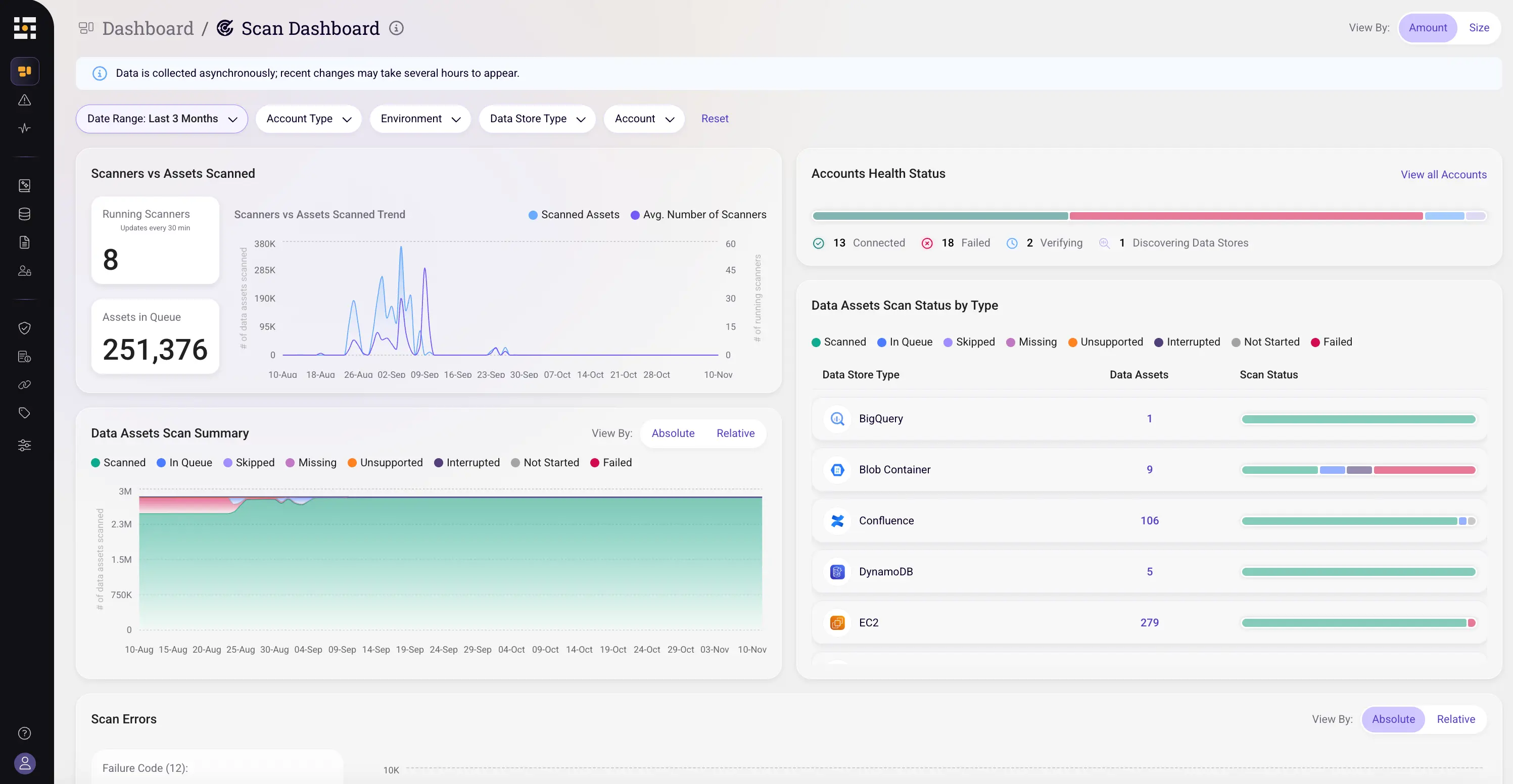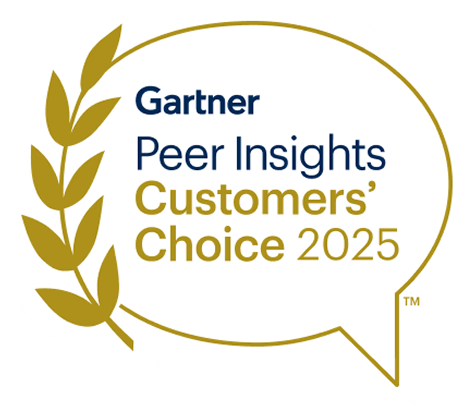How to Gain Visibility and Control in Petabyte-Scale Data Scanning
Every organization today is drowning in data - millions of assets spread across cloud platforms, on-premises systems, and an ever-expanding landscape of SaaS tools. Each asset carries value, but also risk. For security and compliance teams, the mandate is clear: sensitive data must be inventoried, managed and protected.
Scanning every asset for security and compliance is no longer optional, it’s the line between trust and exposure, between resilience and chaos.
Many data security tools promise to scan and classify sensitive information across environments. In practice, doing this effectively and at scale, demands more than raw ‘brute force’ scanning power. It requires robust visibility and management capabilities: a cockpit view that lets teams monitor coverage, prioritize intelligently, and strike the right balance between scan speed, cost, and accuracy.
Why Scan Tracking Is Crucial
Scanning is not instantaneous. Depending on the size and complexity of your environment, it can take days - sometimes even weeks to complete. Meanwhile, new data is constantly being created or modified, adding to the challenge.
Without clear visibility into the scanning process, organizations face several critical obstacles:
- Unclear progress: It’s often difficult to know what has already been scanned, what is currently in progress, and what remains pending. This lack of clarity creates blind spots that undermine confidence in coverage.
- Time estimation gaps: In large environments, it’s hard to know how long scans will take because so many factors come into play — the number of assets, their size, the type of data - structured, semi-structured, or unstructured, and how much scanner capacity is available. As a result, predicting when you’ll reach full coverage is tricky. This becomes especially stressful when scans need to be completed before a fixed deadline, like a compliance audit.
"With Sentra’s Scan Dashboard, we were able to quickly scale up our scanners to meet a tight audit deadline, finish on time, and then scale back down to save costs. The visibility and control it gave us made the whole process seamless”, said CISO of Large Retailer. - Poor prioritization: Not all environments or assets carry the same importance. Yet without visibility into scan status, teams struggle to balance historical scans of existing assets with the ongoing influx of newly created data, making it nearly impossible to prioritize effectively based on risk or business value.
Sentra’s End-to-End Scanning Workflow
Managing scans at petabyte scale is complex. Sentra streamlines the process with a workflow built for scale, clarity, and control that features:
1. Comprehensive Asset Discovery
Before scanning even begins, Sentra automatically discovers assets across cloud platforms, on-premises systems, and SaaS applications. This ensures teams have a complete, up-to-date inventory and visual map of their data landscape, so no environment or data store is overlooked.
Example: New S3 buckets, a freshly deployed BigQuery dataset, or a newly connected SharePoint site are automatically identified and added to the inventory.

2. Configurable Scan Management
Administrators can fine-tune how scans are executed to meet their organization’s needs. With flexible configuration options, such as number of scanners, sampling rates, and prioritization rules - teams can strike the right balance between scan speed, coverage, and cost control.
For instance, compliance-critical assets can be scanned at full depth immediately, while less critical environments can run at reduced sampling to save on compute consumption and costs.

3. Real-Time Scan Dashboard
Sentra’s unified Scan Dashboard provides a cockpit view into scanning operations, so teams always know where they stand. Key features include:
- Daily scan throughput correlated with the number of active scanners, helping teams understand efficiency and predict completion times.
- Coverage tracking that visualizes overall progress and highlights which assets remain unscanned.
- Decision-making tools that allow teams to dynamically adjust, whether by adding scanner capacity, changing sampling rates, or reordering priorities when new high-risk assets appear.

Handling Data Changes
The challenge doesn’t end once the initial scans are complete. Data is dynamic, new files are added daily, existing records are updated, and sensitive information shifts locations. Sentra’s activity feeds give teams the visibility they need to understand how their data landscape is evolving and adapt their data security strategies in real time.

Conclusion
Tracking scan status at scale is complex but critical to any data security strategy. Sentra provides an end-to-end view and unmatched scan control, helping organizations move from uncertainty to confidence with clear prediction of scan timelines, faster troubleshooting, audit-ready compliance, and smarter, cost-efficient decisions for securing data.
<blogcta-big>








.webp)
.webp)


